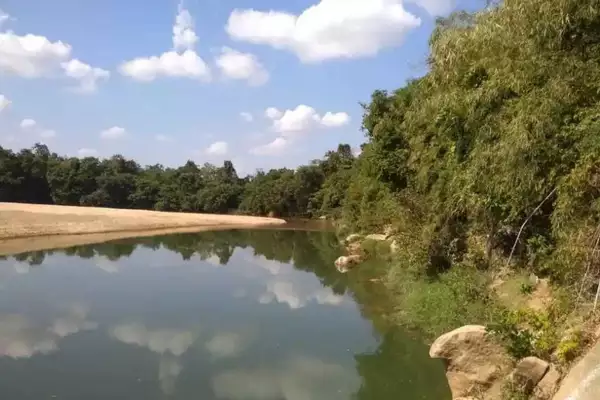Two cyclonic circulations, and merger of four wind systems in the Eturnagaram Wildlife Sanctuary recently uprooted 50,000 to one lakh trees en masse in a linear pattern at Tadwai in the forest.
About Eturnagaram Wildlife Sanctuary:
- It is located in the Mulugu district of Telangana, is a notable wildlife sanctuary renowned for its rich biodiversity and historical significance.
- The sanctuary lies close to the borders of Maharashtra and Chhattisgarh.
- Itconsists of plain land and one-quarter hilly areas, interspersed with numerous streams and springs.
- The perennial Dayyam Vagu river divides the sanctuary into two parts, enhancing its ecological diversity.
- Eturnagaram is recognized for its unique tree fossils and caves, making it historically significant in addition to its ecological importance.
- The vegetation primarily consists of Southern tropical dry deciduous forests.
- Dominant Species include Teak trees, along with associates like thiruman, maddi, bamboo, madhuca, terminalia, and pterocarpus.
- Eturnagaram is home to a variety of wildlife, including Tiger, Leopard, Wolf, Dholes, Golden Jackals, Sloth Bear, Chousingha, Mugger Crocodiles, Pythons, Cobras, and Kraits.
Ref: Source
| UPSC IAS Preparation Resources | |
| Current Affairs Analysis | Topperspedia |
| GS Shots | Simply Explained |
| Daily Flash Cards | Daily Quiz |
Frequently Asked Question:
Where is Eturnagaram Wildlife Sanctuary located?
Eturnagaram Wildlife Sanctuary is situated in the Mulugu district of Telangana, near the borders of Maharashtra and Chhattisgarh.
What is the significance of Eturnagaram Wildlife Sanctuary?
The sanctuary is notable for its rich biodiversity, unique tree fossils, and historical significance, making it an important ecological and cultural site.
What are the geographical features of the sanctuary?
Eturnagaram consists of plain land and hilly areas, interspersed with numerous streams and springs, and perennial Dayyam Vagu river.



